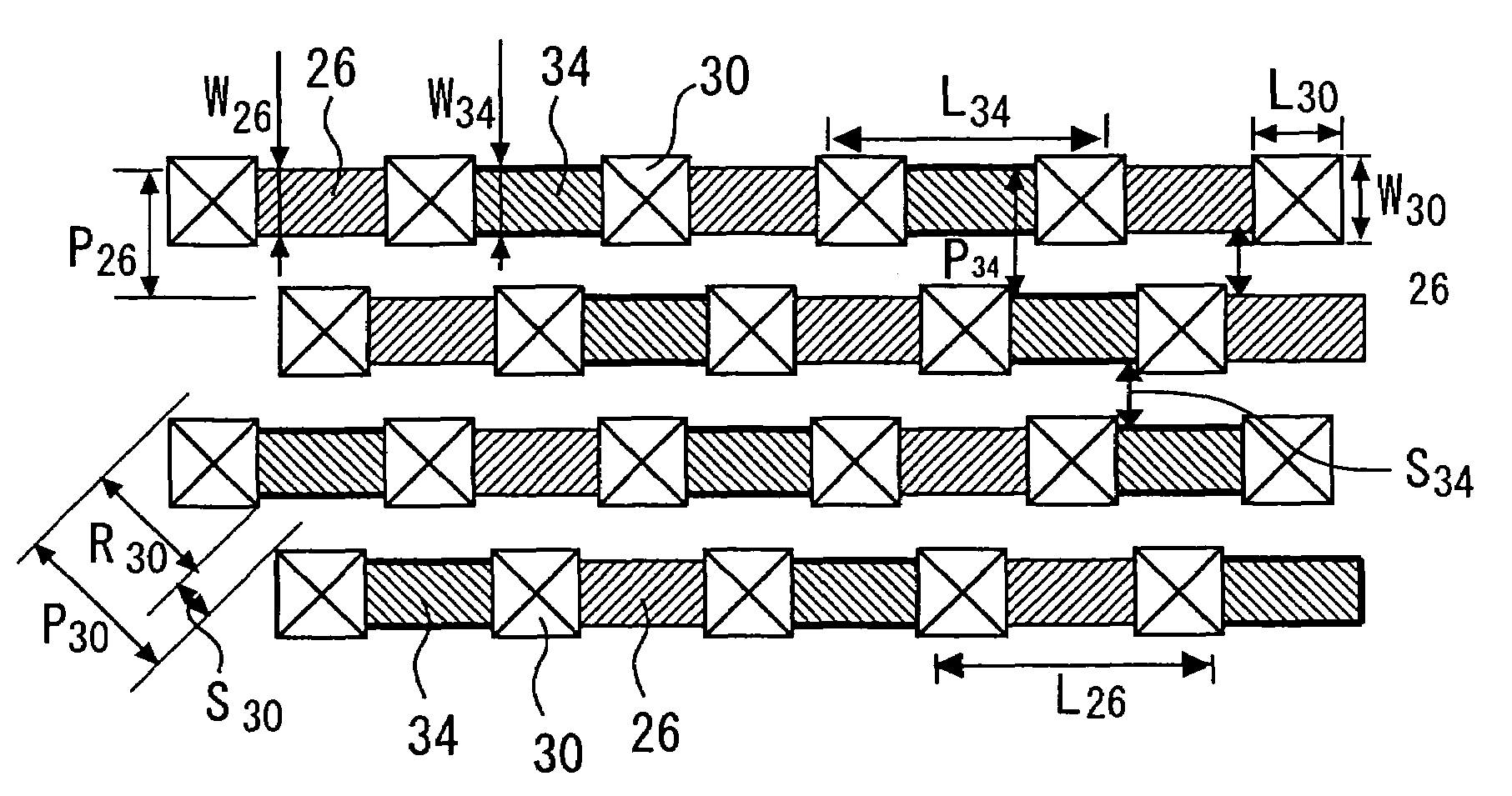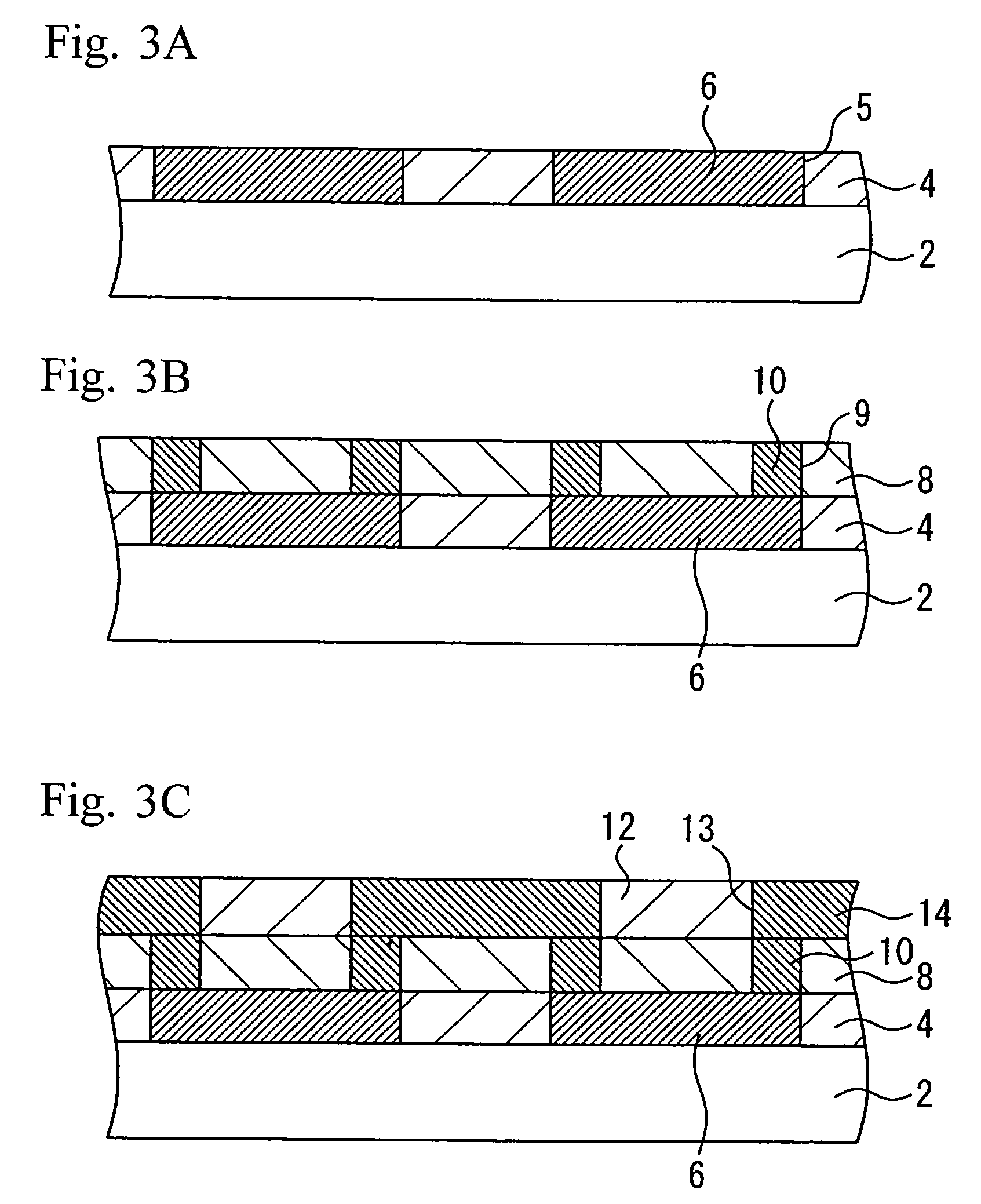Semiconductor device having multilayer structure and method for manufacturing thereof
a semiconductor and multi-layer technology, applied in the direction of solid-state devices, pulse techniques, basic electric elements, etc., can solve the problems of lithography techniques that cannot be used in particular, the method of wiring design on a square grid (also called “uniform grid”) cannot be used, and the wiring design cannot be made on a square grid. achieve the effect of improving the wiring structure and accurate pattern formation
- Summary
- Abstract
- Description
- Claims
- Application Information
AI Technical Summary
Benefits of technology
Problems solved by technology
Method used
Image
Examples
first embodiment
[0038]FIG. 1 is a schematic cross-sectional view of a semiconductor device according to a first embodiment of the present invention, and FIG. 2 is a schematic top view of the wiring structure of the semiconductor device in the first embodiment of the present invention.
[0039]As shown in FIGS. 1 and 2, transistors, wiring layers, etc., (not shown) are formed as required on a substrate 2 of the semiconductor device in the first embodiment. A first interlayer dielectric film 4 constituting a first wiring layer is also formed on the substrate 2. First wirings 6 are formed in the first interlayer dielectric film 4. The thickness of the first interlayer dielectric film 4 and the first wirings 6 is about 200 nm. A second interlayer dielectric film 8 constituting a via layer is formed on the first interlayer dielectric film 4 and the first wirings 6. Vias 10 are formed in the second interlayer dielectric film 8 so as to be connected to the first wirings 6 through the second interlayer dielec...
second embodiment
[0067]FIG. 9 is a schematic cross-sectional view of a semiconductor device according to a second embodiment of the present invention. FIG. 10 is a schematic top view of the wiring structure of the semiconductor device in the second embodiment.
[0068]As shown in FIGS. 9 and 10, the semiconductor device in the second embodiment is similar to the semiconductor device in the first embodiment described above. However, vias of the semiconductor device in the second embodiment are formed so as to be larger than the wiring width. Concrete description of this will be made below.
[0069]In the semiconductor device in the second embodiment, a first interlayer dielectric film 24 constituting a first wiring layer is formed on the substrate 22, as is that of the semiconductor device in the first embodiment. First wirings 26 are formed in the first interlayer dielectric film 24. The thickness of the first interlayer dielectric film 24 and the first wirings 26 is about 200 nm. A second interlayer diel...
PUM
| Property | Measurement | Unit |
|---|---|---|
| width | aaaaa | aaaaa |
| angle | aaaaa | aaaaa |
| angle | aaaaa | aaaaa |
Abstract
Description
Claims
Application Information
 Login to View More
Login to View More - R&D
- Intellectual Property
- Life Sciences
- Materials
- Tech Scout
- Unparalleled Data Quality
- Higher Quality Content
- 60% Fewer Hallucinations
Browse by: Latest US Patents, China's latest patents, Technical Efficacy Thesaurus, Application Domain, Technology Topic, Popular Technical Reports.
© 2025 PatSnap. All rights reserved.Legal|Privacy policy|Modern Slavery Act Transparency Statement|Sitemap|About US| Contact US: help@patsnap.com



